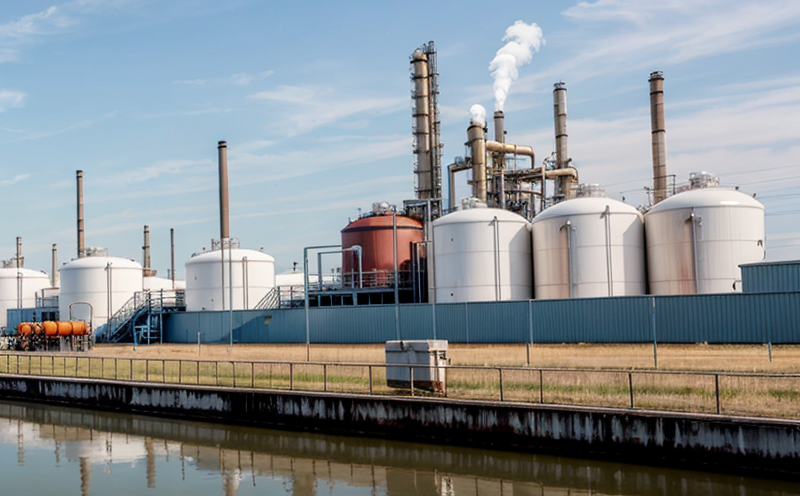IEC 60754 Toxic Gas Emission Safety Testing of Plastics
The International Electrotechnical Commission (IEC) standard IEC 60754-1 is a critical tool for ensuring the safety and reliability of plastics used in electrical and electronic equipment. This test evaluates whether certain types of plastic materials can emit potentially harmful toxic gases under high-temperature conditions, which could be hazardous to human health or the environment.
The process involves placing a specimen made from the specific type of plastic under controlled heating until it reaches a predetermined temperature. The emitted gases are then collected and analyzed for their composition and concentration. This test is essential in industries where electrical components may come into contact with personnel, such as manufacturing environments, healthcare settings, or consumer electronics.
The importance of this testing cannot be overstated, especially in sectors like automotive, medical devices, and consumer electronics, where the safety of end-users is paramount. Non-compliance can lead to severe health risks, product recalls, and financial losses. Our laboratory adheres strictly to IEC 60754-1 guidelines, ensuring accurate and reliable results.
The testing process requires meticulous preparation of specimens, precise control over environmental conditions, and sophisticated analytical equipment capable of identifying even trace amounts of toxic substances. The results not only provide peace of mind but also help companies meet regulatory requirements and maintain a competitive edge in the market.
| Test Parameters | Specimen Preparation | Instrumentation Used |
|---|---|---|
| Heating temperature range: 200°C to 350°C | Cut specimen of specified dimensions and weight | Gas chromatography-mass spectrometry (GC-MS) |
| Durational time for heating: 1 hour at peak temperature | Surface cleaning with solvent | Infrared gas analyzer (IRGA) |
| Sampling rate of gases: Every 30 minutes during heating period | Weighing before and after testing to measure weight loss | Spectrophotometer for detecting specific compounds |
The results are analyzed against IEC standards, ensuring that the plastic meets safety requirements. Compliance with these regulations is not just a legal requirement but also a commitment to public health and environmental sustainability.
Why It Matters
The importance of this testing cannot be overstated in industries where electrical components may come into contact with personnel, such as manufacturing environments, healthcare settings, or consumer electronics. The potential for toxic gas emissions from plastics can lead to severe health risks if not properly managed.
- Health Risks: Exposure to certain volatile organic compounds (VOCs) and other toxic gases emitted by plastic materials can cause respiratory issues, skin irritation, and even more serious diseases like cancer.
- Environmental Impact: Toxic emissions from plastics can contaminate air and water supplies, posing significant risks to ecosystems and wildlife.
- Regulatory Compliance: Many countries have stringent regulations regarding the use of toxic substances in consumer products. Non-compliance can result in hefty fines and reputational damage.
- Market Trust: Companies that invest in such tests build trust with consumers who are increasingly aware of the environmental impact of their purchases.
In summary, IEC 60754-1 testing is not just a compliance exercise but a commitment to public health and environmental responsibility. The results ensure that products meet the highest safety standards, protecting both users and the environment.
Scope and Methodology
The scope of IEC 60754-1 covers the evaluation of toxic gas emissions from specific types of plastic materials used in electrical and electronic equipment. The methodology involves a series of controlled tests designed to simulate real-world conditions under which these plastics might be exposed to high temperatures.
| Test Parameters | Methodology |
|---|---|
| Heating temperature range: 200°C to 350°C | Specimens are placed in a controlled environment where they are heated to the specified temperatures over an hour. |
| Durational time for heating: 1 hour at peak temperature | The specimens remain exposed to this temperature throughout the testing period. |
| Sampling rate of gases: Every 30 minutes during heating period | Gases are collected and analyzed every half-hour. |
The analysis focuses on identifying and quantifying any toxic compounds present in the emissions. The results are compared against international standards to ensure compliance with safety regulations.
Quality and Reliability Assurance
- Controlled Environment: Our laboratory maintains a controlled environment for all tests, ensuring consistent temperature and humidity levels that do not interfere with the test results.
- Sophisticated Equipment: We use state-of-the-art instruments like gas chromatography-mass spectrometry (GC-MS) to accurately measure and identify emissions.
- Regular Calibration: All equipment is regularly calibrated to ensure accuracy and reliability of the test results.
- Trained Personnel: Our team consists of highly trained professionals with extensive experience in conducting such tests, ensuring that each specimen receives meticulous attention.
- Comprehensive Reporting: Detailed reports are generated for every test, providing comprehensive insights into the toxic gas emissions and compliance status.
The quality assurance process is rigorous to ensure that all tests meet international standards. This commitment not only ensures accurate results but also provides clients with confidence in the safety of their products.





